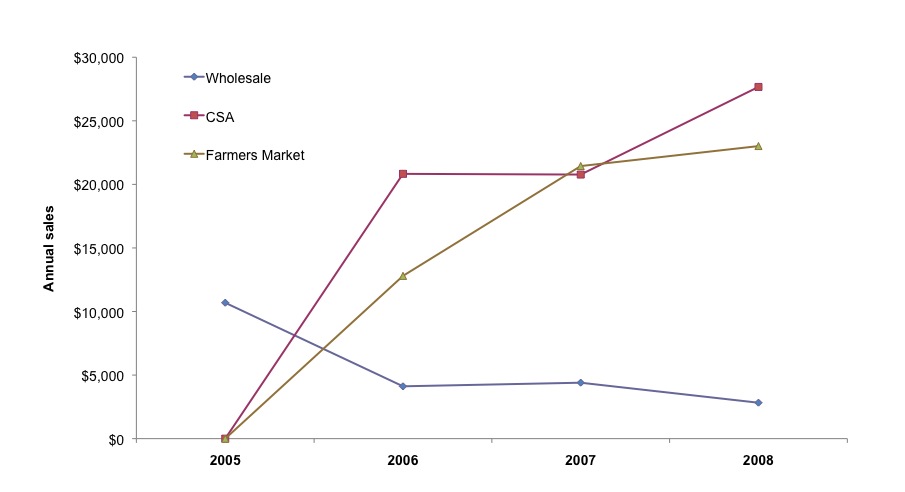Management & Marketing
Marketing Models
Adam and Laura started out focusing on wholesale sales in 2005 because it was a low-risk model for their first year and they knew they didn’t have enough farming experience to commit to the pre-paid nature of a CSA. They wanted some initial experience farming on their own before transitioning to a direct-marketing model. Laura and Adam quickly changed strategies, however. Wholesale was appealing because it felt like a more efficient way to grow and sell their product, but they found it was not profitable at their small scale. When they switched to a direct-marketing emphasis in 2006, their operating profit margin jumped from 7% to 26% (see Finances). |
Educator’s Perspective: Resource Tip Marketing Local Foods This handbook is designed to help Minnesota farmers explore the various options for marketing local food. It introduces the basics of different marketing systems, suggests resources, and includes profiles of farmers who are selling farm products directly to consumers via farmers markets, roadside stands, CSAs, and on-farm stores. It also contains information and profiles about selling indirectly via retail food establishments or food services. |
Adam and Laura have maintained wholesale as a small percentage (5-10%) of overall sales since 2006 so they are not completely reliant on direct marketing for their income (Figure 49). It also provides them with an avenue for selling excess product.

Figure 49: Loon Organics transitioned from wholesale-only in their first year to an emphasis on direct sales. They like their current combination of three enterprises.
Laura and Adam’s preferred methods of direct marketing are CSA and the farmers market. They have no plans to set up a roadside stand at their new farm; they don’t want to deal with the constant labor involved, and they like partitioning their marketing time into periods of concentrated sales. They also ruled out a “pick-your-own” operation because they didn’t want the liability or efficiency issues of having customers in the fields and around machinery. They don’t anticipate adding other direct-marketing methods, such as consumer buying clubs, to the mix because they’re happy with their current combination and don’t feel they could handle the administrative burden of additional channels.